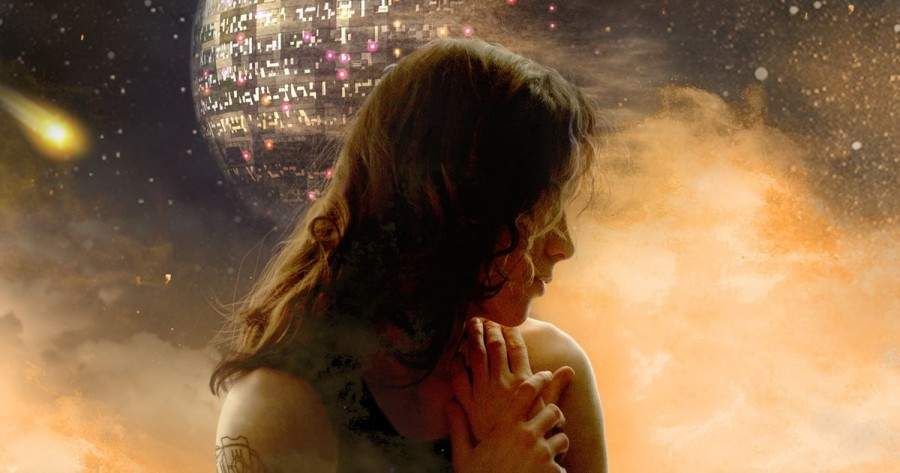Stone in the Sky
Cecil Castellucci
Roaring Brook Press
Release Date: February 24, 2015
ISBN 978-1-59643-776-0
Stone in the Sky is the follow up to Cecil Castellucci’s 2014 young adult science fiction novel Tin Star. In it, we are reunited with Tula Bane as she continues to make a living on the remote space station Yertina Feray.
After the desperate events that closed out Tin Star (the loss of the only three humans that Tula has ever known since her family was killed in a shuttle explosion, and witnessing the rise of the charismatic leader of the movement Children of Earth, Brother Blue, who left Tula for dead on the space station and who Tula believes was behind the shuttle explosion that took her mother and sister from her), Tula again finds herself as the only human on the Yertina Feray. But through her keep bargaining skills, she has been able to open a popular water, salts and sweets shop that she calls the Tin Star Café (even though there has never been coffee on this station, ever).
But then a rogue spacecraft crashes on the nearby planet Quint, and lo and behold, a startling discovery is made. The planet, abandoned after its mining reserves were exhausted, has benefited in an unexpected way during its years of lying fallow: the rare and valuable flower alin has blossomed and flourishes along the equatorial line. Suddenly, a land rush is on to claim territory on Quint, and the space station becomes the center of a giddy frontier commotion. On one hand, this is a boon to the Yertina Feray and its inhabitants; on the other hand, it brings unwanted attention to the station, including the scrutiny of the iron fisted Imperium.
For Tula, the dangers are immense. Not only has Brother Blue risen in Imperium standing (making it even more imperative that she stay under their radar), but humans –both their supposed colonies and their despised wayfaring counterparts – have become pawns in galactic power mongering. And there are more intimate dangers, as well, as the craft that crashed on Quint and started the land rush brings someone from Tula’s past who turns her personal life into an ever spiraling turmoil.
Author Cecil Castellucci does a fantastic job of populating Stone in the Sky with non-human races who feel more “native” than humans (as she did with the first book in the series, Tin Star), and the relationship that Tula has with Tournour, the head of station security who is a Loor (a somewhat insectile race) is touching, and speaks uniquely to the young adult sense of being an outsider even in what you consider to be your own home. The ways that Tula is torn, between wanting to fade into the woodwork and feeling compelled to work for change, as well as her physical attraction to a man of her own race despite her feelings for Tournour, are also bound to strike a chord in her target audience.
Unfortunately, Stone in the Sky tries to do too much, and ends up falling short in many of its key developments and resolutions. Timely coincidences, the appearance of some kind of cavalry saving the day, amazing reveals and redemptive actions happening just in the nick of time occur too often to keep a sense of real drama from unfolding. Galvanizing speeches only work if there is a strong groundwork to give them purchase, and help coming from unexpected quarters gets old quickly.
Still, when the focus is on Tula’s personal discoveries, the story shines. Especially effective is when Tula finds herself on the lush planet Bessen after spending years on an enclosed space station.
It wasn’t the gravity of the planet that was making it difficult for me to walk. Although it was slightly heavier than the Yertina Feray, I knew that was a little lighter than Earth. It was the sky I could not get used to. It was the birds. It was the wind. It was the trees. It was the sound that a planet makes. Even in the quiet of the country, it was deafening.
I was so used to the dome of the station that the sky troubled me. The largeness of it and the color, an unreal-looking indigo, confused me. It was as thought the sky wanted to scoop me up and fold itself around me one million times.
That sense of being overwhelmed by what is considered normal is very relatable, making Tula a familiar and compelling character, full of wonderment and disquietude in equal measure. But by the time Tula leaves the planet, the storyline is already heading in a direction rife with universal import so any empathy we may have had with our heroine is quickly left in the plot’s rear view mirror.
Had Stone in the Sky been part of a trilogy, giving more time for the momentous actions in the last half of the book to develop and more time for Tula to grow into her burgeoning heroic role(s), it may have been as successful as Tin Star. In that first book, the reader was given the time to truly get to know Tula and to watch her stumble and grow, with the universe as a backdrop rather than playing field. Expanding Tula’s role over two books rather than shoe horning it into one might have made her more credible, allowing the reader time to revel in her journey, rather the narrative simply making it so.
All in all, Stone in the Sky is a valiant attempt, with some unique and expansive characters and some deft moments, but ultimately it reaches too far and falls too short to be completely successful.
~ Sharon Browning

